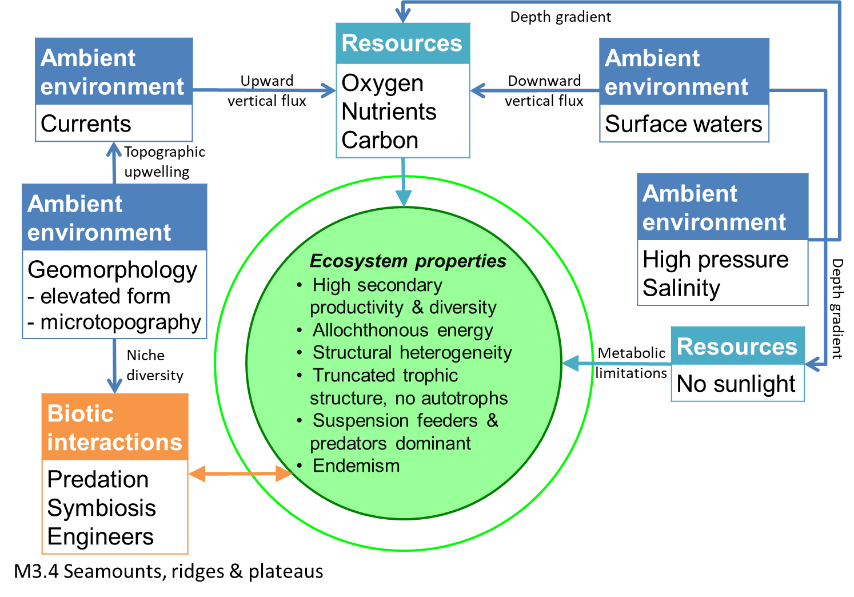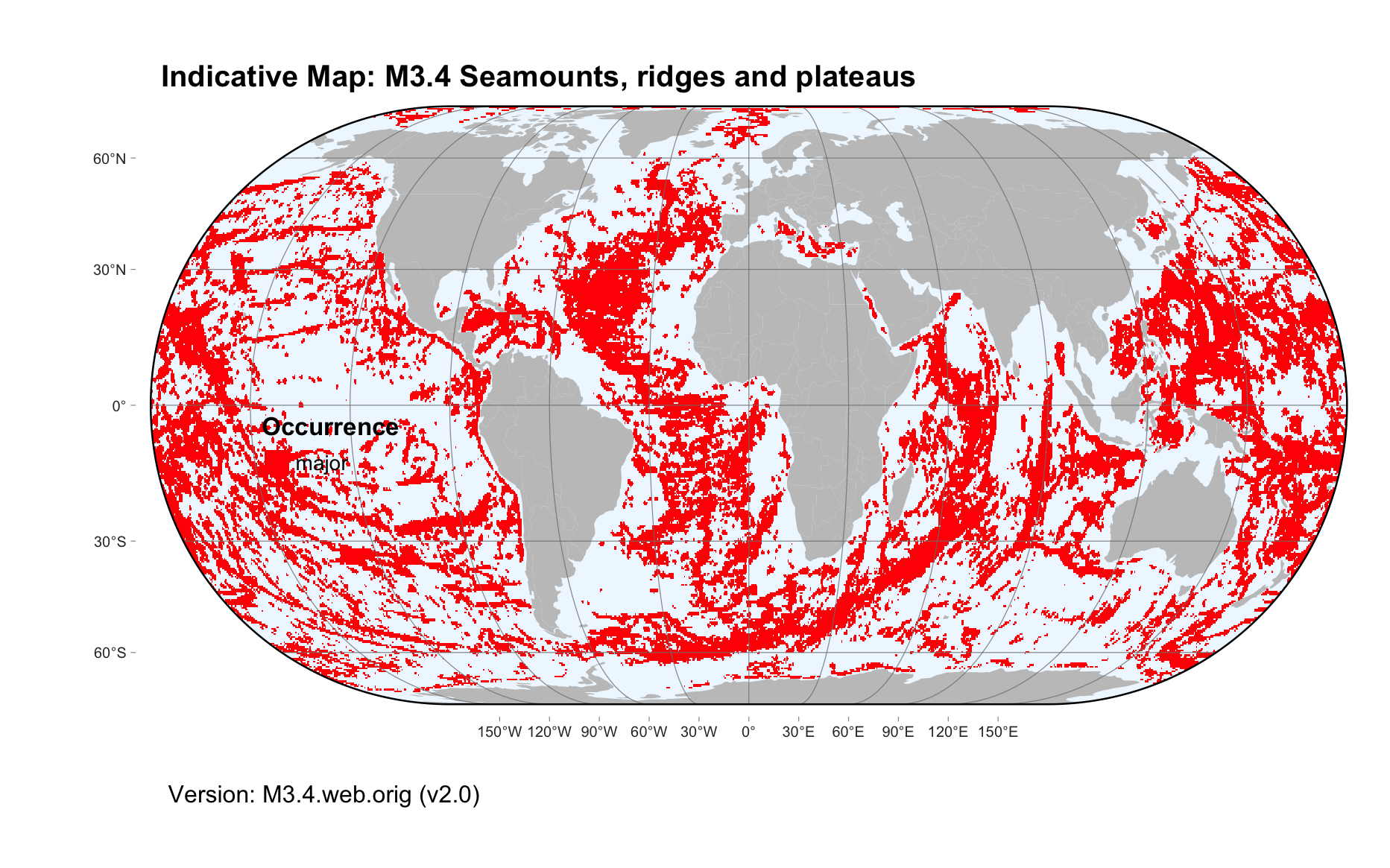Global ecosystem typology
Alternative site for the Global ecosystem typology with additional information for ecosystem profiles and indicative maps.
This site is maintained by jrfep
M3.4 Seamounts, ridges and plateaus
Biome: M3. Deep sea floors biome
Contributors:
(texts)
These deep, lightless ecosystems are centred on major geomorphic features of deep ocean floors. These elevated features interrupt lateral ocean currents and generate upwelling of nutrients. This promotes productivity in surface waters, which returns to depths as detritus. The input of these resources, combined with varied rocky micohabitats, unlike the sand and mud around them, supports diverse communities of immobile filter feeders (e.g. sponges), mobile benthic organisms (e.g. molluscs and starfish), and large aggregations of fish, especially around seamounts.
Key Features
Elevated geomorhic features with modified hydrography and heterogeneous habitat supporting high bnethic and pelagic productivity.
Overview of distribution
Elevated rocky topographic features rising from deep seafloor.
Profile versions
- v1.0 (2020-01-20): E Ramirez-Llodra; AA Rowden; DA Keith
- v2.0 (2020-05-28): E Ramirez-Llodra; AA Rowden; IG Priede; DA Keith
- v2.01 ():
- v2.1 (2022-04-06): E Ramirez-Llodra; AA Rowden; IG Priede; DA Keith Full profile available at official site
Main references
Selected references for this functional group:
Rogers AD (2018) The Biology of Seamounts: 25 Years on Advances in Marine Biology 79:137-224 DOI:10.1016/bs.amb.2018.06.001
Schlacher A, Rowden AA, Dower JF, Consalvey M (2010) Recent advances in seamount ecology: A contribution to the Census of Marine Life Marine Ecology (special issue) 31: 1-241.
Diagrammatic assembly model

Maps
Maps are indicative of global distribution patterns are not intended to represent fine-scale patterns. The maps show areas of the world containing major (coloured red) or minor occurrences (coloured yellow) of each ecosystem functional group. See general notes on maps.
There are 2 alternative versions of the indicative map for this functional group, please compare description and sources below.
M3.4.IM.orig_v2.0
Datasets
- GSFM-2014
Map references
Harris PT, Macmillan-Lawler M, Rupp J, Baker EK (2014) Geomorphology of the oceans. Marine Geology 352: 4-24. 10.1016/j.margeo.2014.01.011
M3.4.web.orig_v2.0

Datasets
- GSFM-2014
Map references
Harris PT, Macmillan-Lawler M, Rupp J, Baker EK (2014) Geomorphology of the oceans. Marine Geology 352: 4-24. 10.1016/j.margeo.2014.01.011
Check: the Glossary / Profile structure / the public document